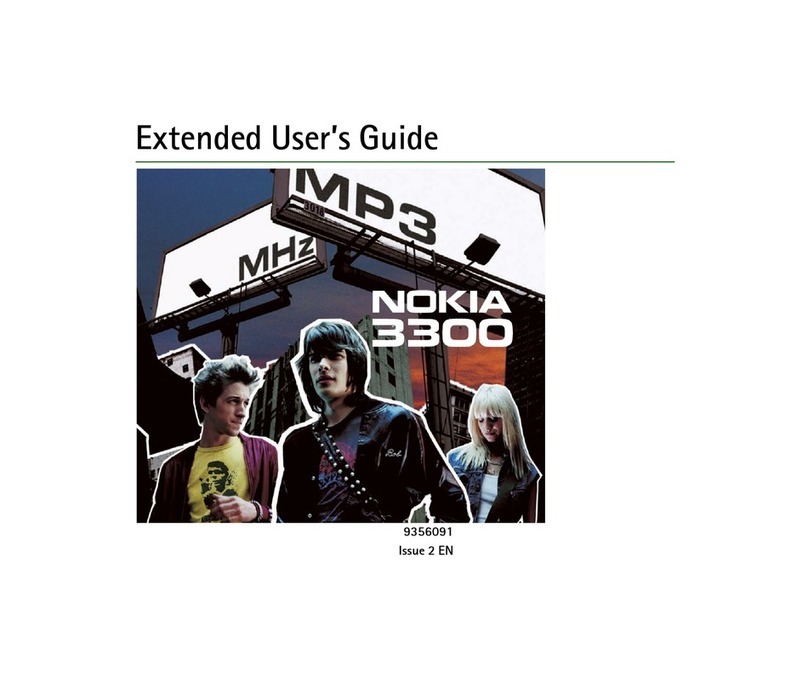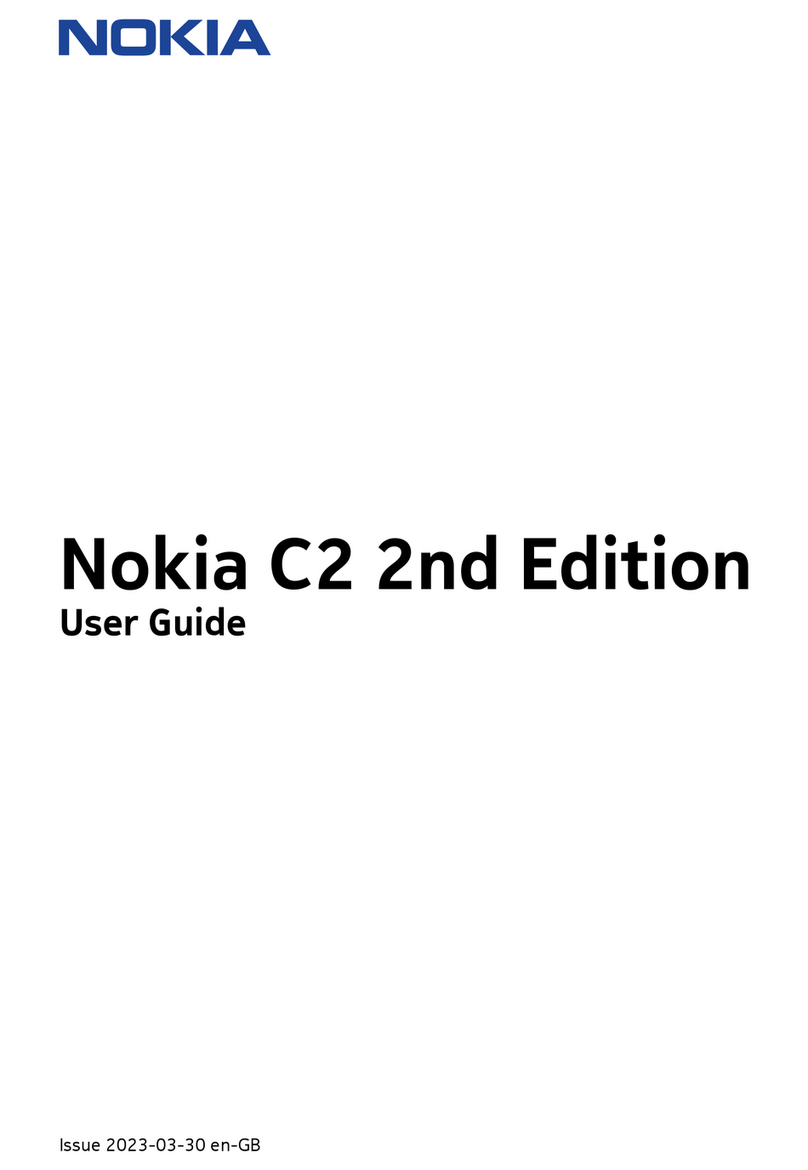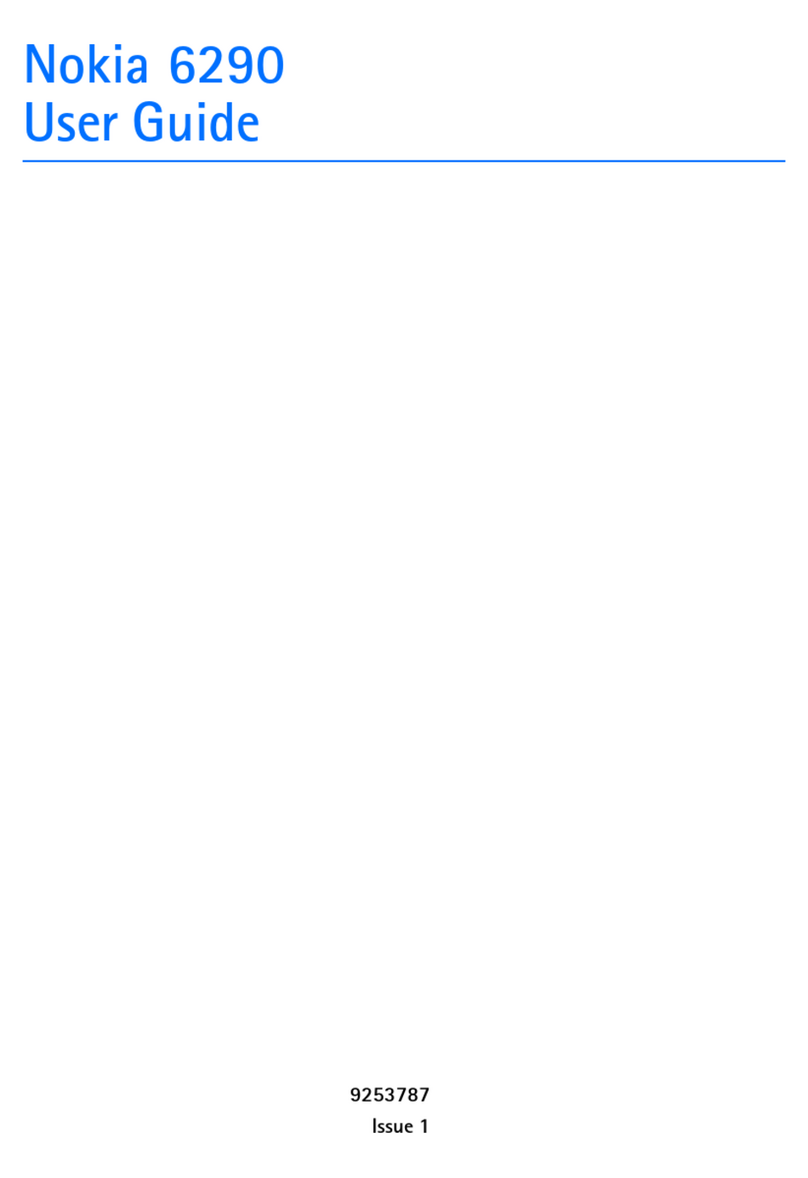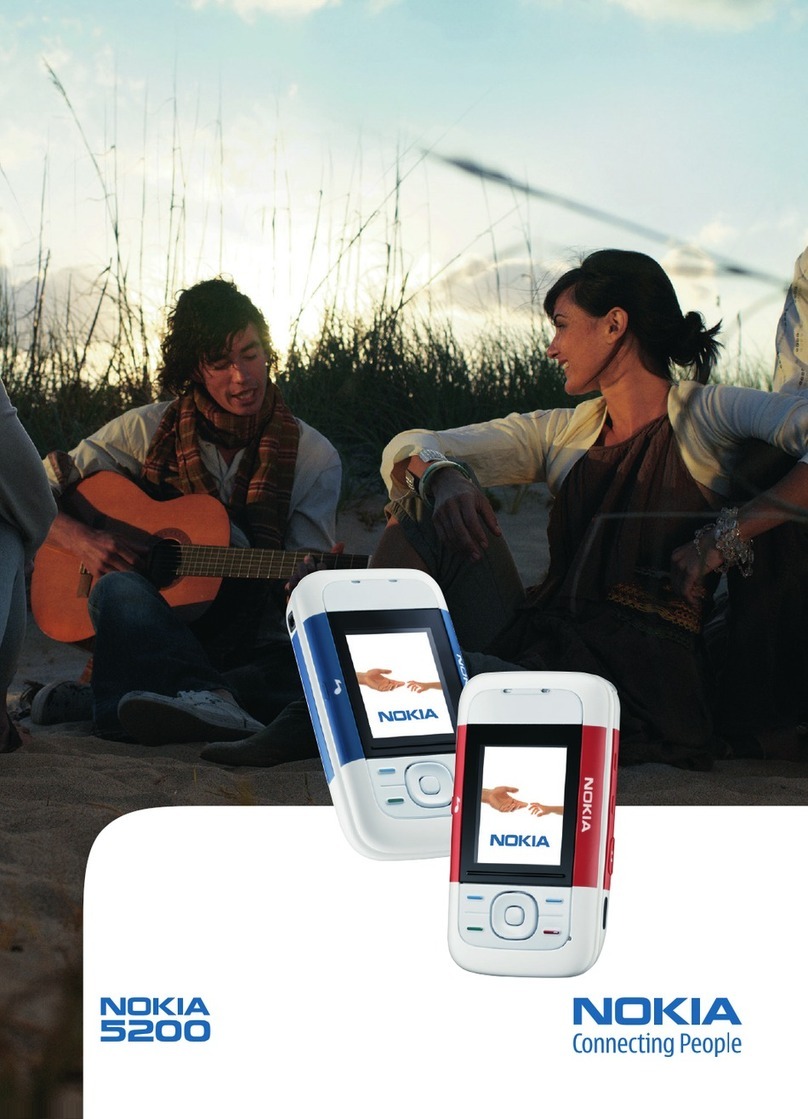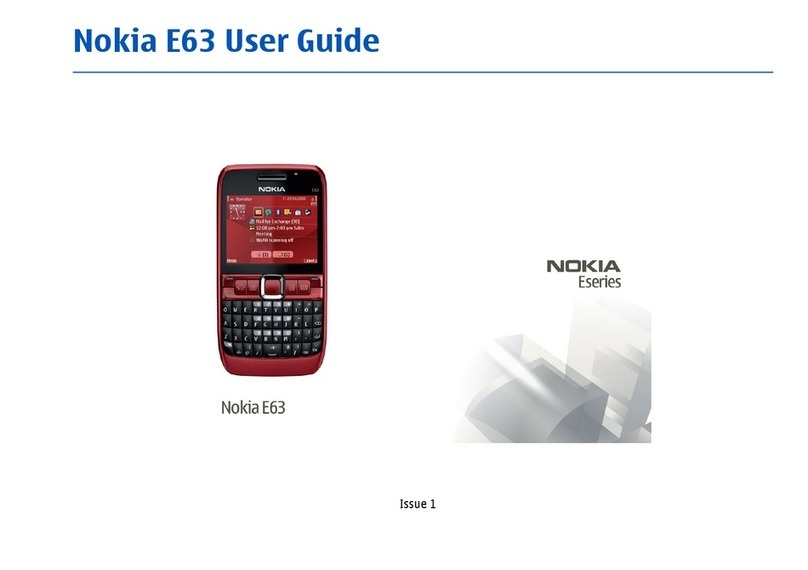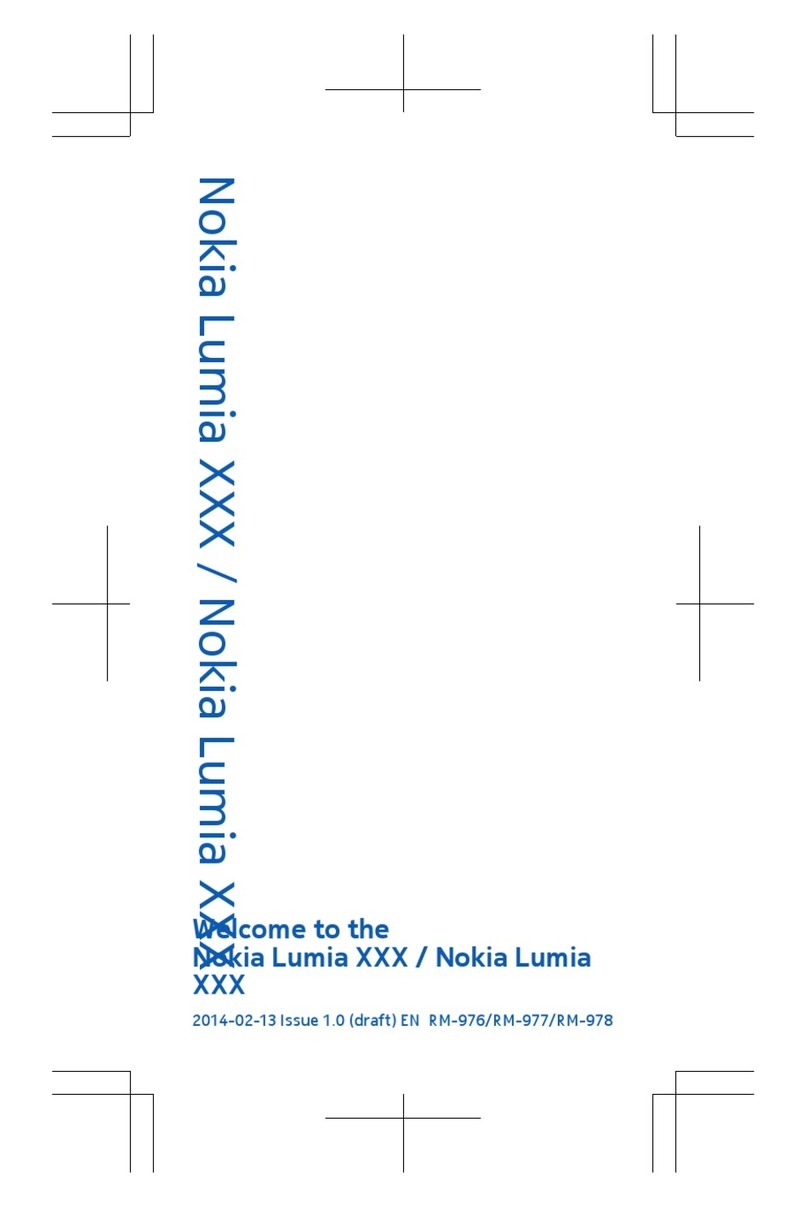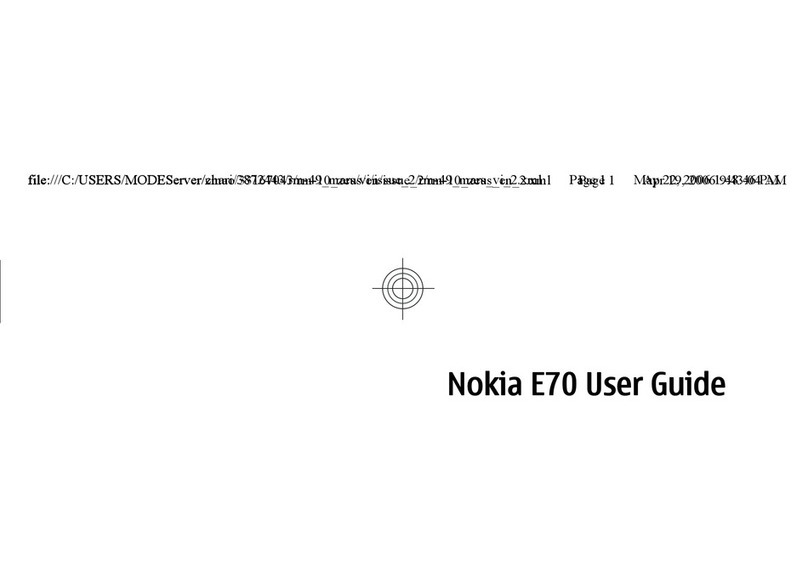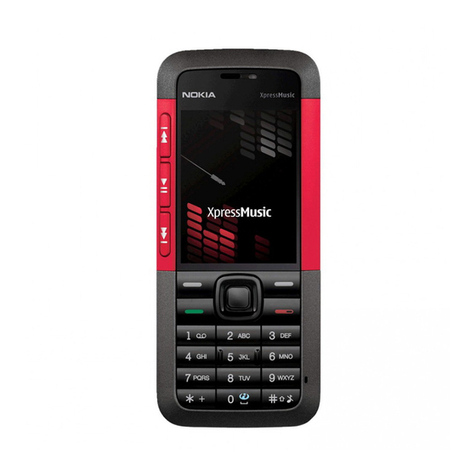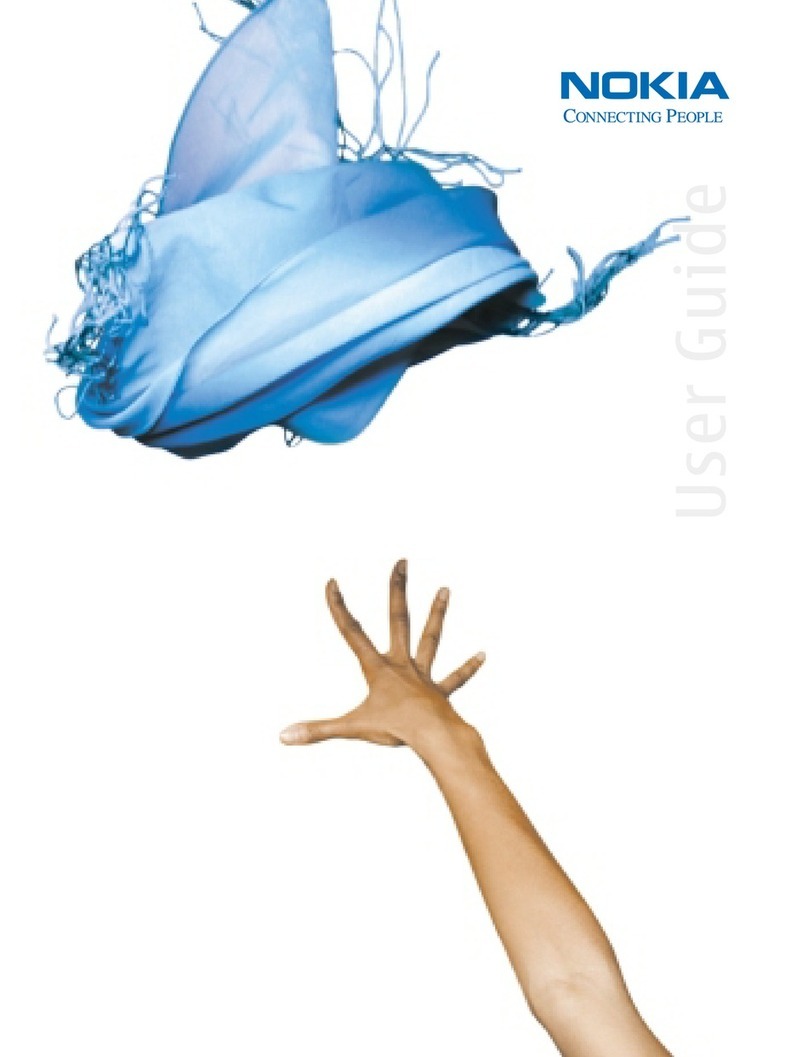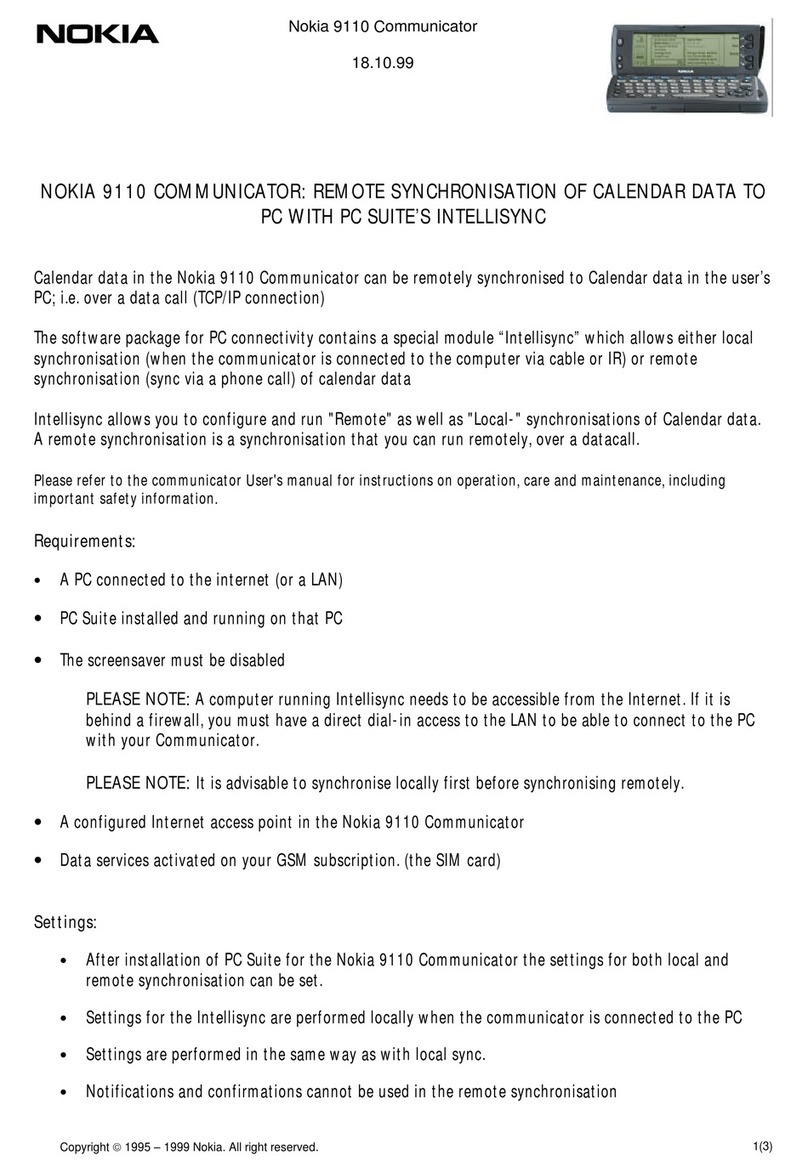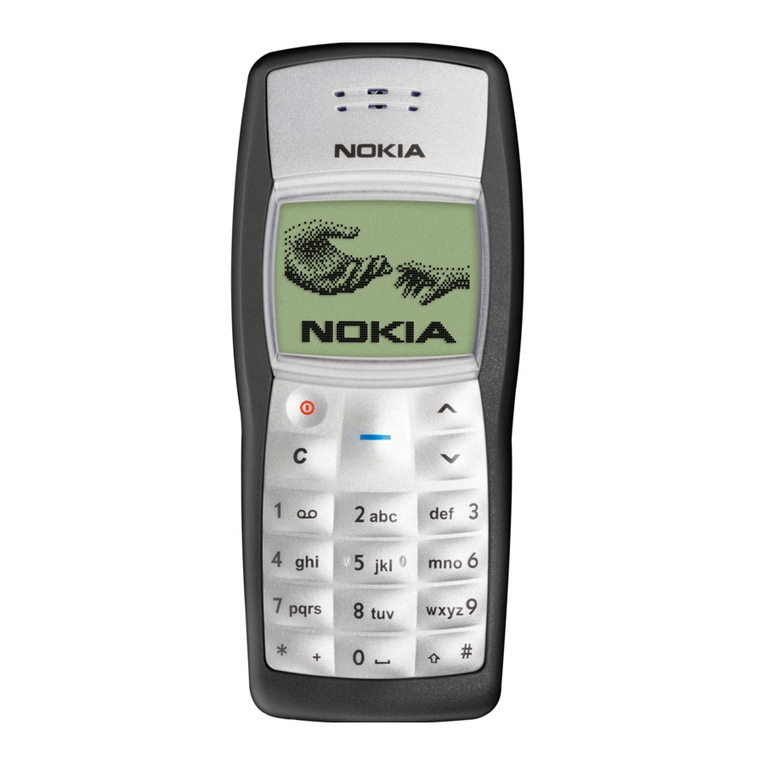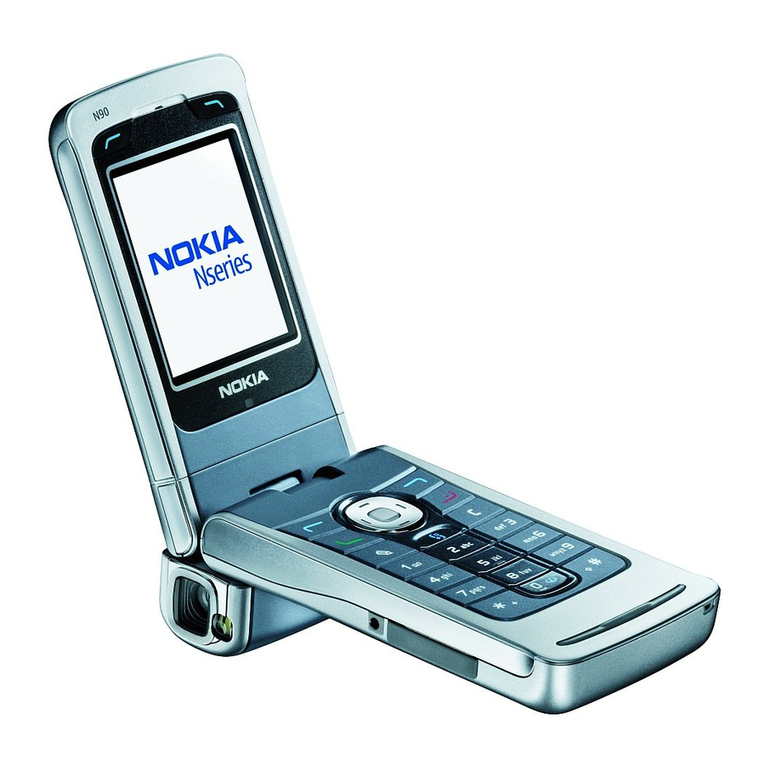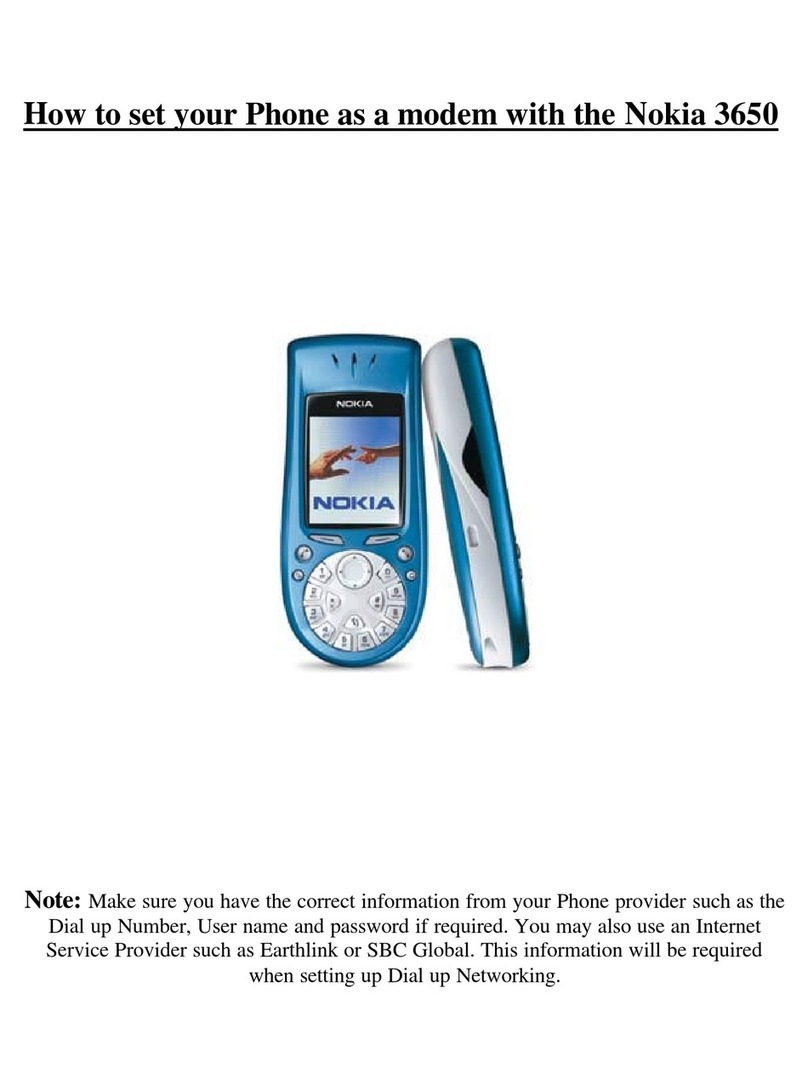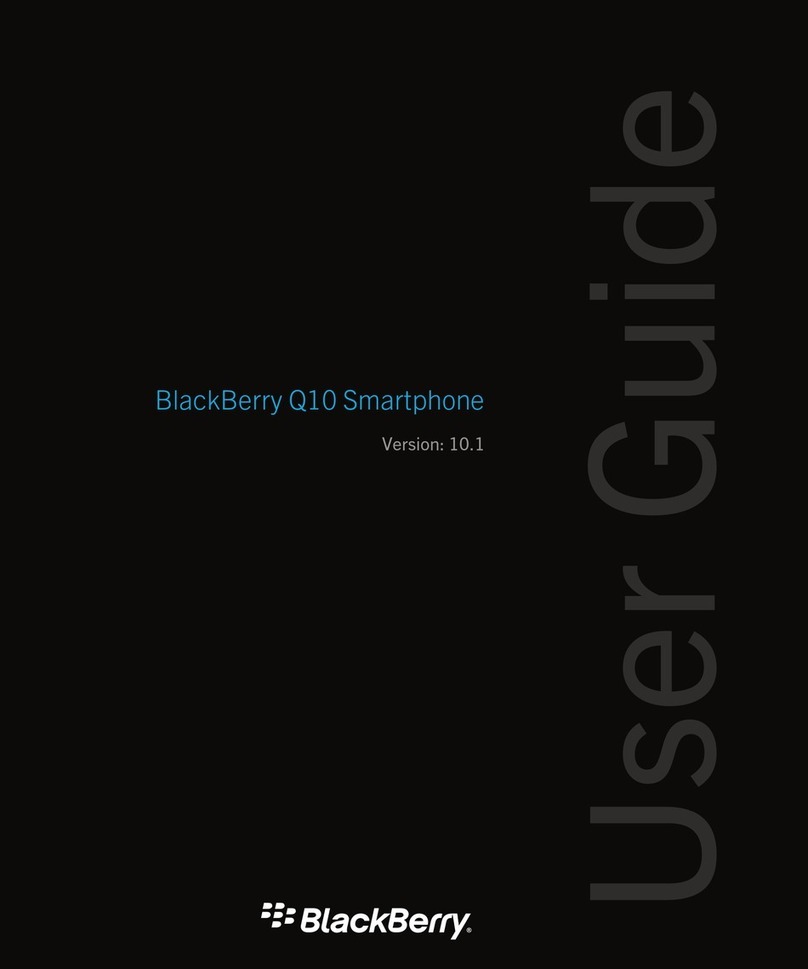
Issue 1 04/2005 COMPANY CONFIDENTIAL 5
Copyright © 2005 Nokia. All Rights Reserved.
RM-94
6(b) - RF Troubleshooting Nokia Customer Care
General Information on RF Troubleshooting
Notes:
Several bills of material (BOM): There are two different kinds of VCOs, VCTXOs, RF-PAs, SAW-
filters and Antenna Switches (ASM) assembled. They may only be replaced with the same type
as the original component (from the same manufacturer).
Phoenix version: In this document there are example measurements being depicted with pic-
tures of AMS-Phoenix,version A 2004.06.1.69. In later versionspictures of menus and windows
may look differently.
Layout version: The drawings of test points and component placement in this version of thedoc-
ument are taken from build B4.0 layout (1gqa_41a). If you use the document for newer layout
versions, make sure to use the corresponding assembly and test point drawings.
■ Test environment
It is assumed, that the phones are disassembled and tested with a repair jig MJ-22R.
The following measurements have to be done for repairing the phone boards:
•RF measurements shall be done using a spectrum analyzer together with a high-
frequency probe. Note that the signal will be significantly attenuated. Correct atten-
uation can be checked using a “good” phone board for example.
•LF (low frequency) and DC measurements shall be carried out with an oscillo-
scope together with a 10:1 probe.
• For receiver measurements, a signal generator specified for frequencies up to
2000 MHz is required. The signal generator is connected to the antenna port of the
repair jig.
Most of the radio communication testers, like CMU200, can be used as a signal gen-
erator, but make sure to have a continuous (CW) signal without modulation for align-
ment purposes.
•Transmitter output level measurements shall be done with a power meter
which is connected to the antenna port of the repair jig.
Always make sure that the measurement set-up is calibrated when measuring RF parameters
at the antenna port. Remember to put the correct losses of the module repair jig and the con-
necting cable in Phoenix or in the set-up programs of the RF generators when realigning the
phone.
Apart from key-components described in this document, there are a lot of discrete components
(resistors, inductors and capacitors) for which troubleshooting has to be done by checking its
proper soldering and complete assembly on the PWB. Capacitors and resistors can be
checked by means of an ohm-meter, but be aware in-circuit measurements should be evaluat-
ed carefully.
■ Test conditions
Rx tuning of the 26 MHz reference oscillator (VCTCXO) is temperature sensitive because
of the estimations of <AFC_value> and <AFC_slope>. According to the Production Test Spec-
ification DCS02294-EN-0.5, the ambient temperature has to be within a temperature range of
22°C to 28°C.
